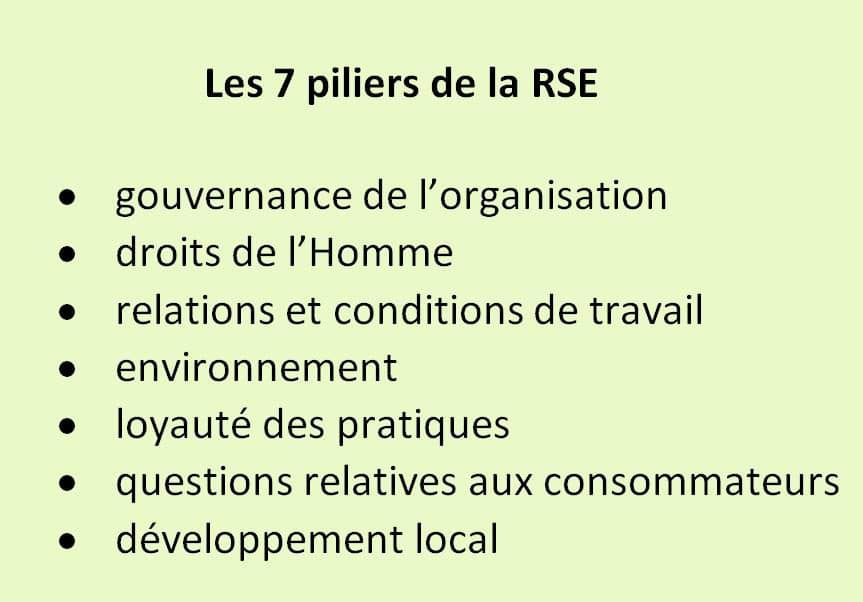[Interview]
Why define a CSR strategy in the company? How to avoid falling into greenwashing or socialwashing? How to find the right balance without blocking the progress of projects in the company? Or how can we ensure that ambitious objectives will be successfully implemented on the ground? For Hoël Beau, trainer, facilitator and CSR consultant, the success of the approach relies above all on the “strength of the collective”.

In terms of CSR (corporate social responsibility), success depends above all on commitment. The commitment of a work collective that must be motivated and “on board”. “Before saying what the company is going to do or how it is going to do it, it is necessary to explain why the company is going to do it. » Hoël Beau answers ORSYS’ questions.
Why implement a CSR strategy in the company? So this is the first question to ask yourself?
Yes indeed ! The question of why is an essential prerequisite. Some people or certain brands succeed in getting others on board (customers, partners, employees, etc.) and this is no coincidence. Apple is thus recognized for its inspiring leadership.

It is a success that can be explained with the golden circle or Golden Circle. A concept put forward by Simon Sinek during a Tedx conference in 2010.
The starting point for a reflection or a strategy must be the why, in other words the reason for being. We then focus on the how/how, that is to say the value proposition or competitive advantage. It is only afterwards that the what/what comes: the idea, the service or the product. Clearly, this tool allows you to develop your CSR strategy based on meaning.
What is the first step in defining the why of your CSR strategy?
The first step is the training of the company's management teams. So, the Codir. When I lead the training Implementing a CSR approach, I start with a collective intelligence workshop. The idea is to put all participants at the same level of knowledge of the subject. And CSR, with its 7 pillars, is a vast subject!
Participants will ask themselves why, then share these questions with their teams. This will allow them to move forward better later, because it is meaning that pushes them to action.

Another possibility: organize a “world café”. Sometimes the best ideas emerge informally around the coffee machine or during an afterwork party! The concept of the world café is to reproduce this state of mind. In a few minutes, participants try to answer a first question. For example: what is CSR? They are gathered in small groups around tables equipped with a large white sheet. Everyone writes down an idea which may give another idea to another participant and so on… Some change tables to answer the other questions.
The use of these methods in training with management teams demonstrates their usefulness and effectiveness. The participants leave with the intention of spreading them in their company.
In your opinion, what are the main reasons that motivate companies to implement CSR?
For some managers, it is about aligning their company's activity with their ecological beliefs. They wish to contribute to the evolution of society towards more sustainability. They may also have in mind the sustainability of their business, in the sense of longevity.
Others see it as an even more direct benefit for their business.
First, on the financial level. On the one hand, companies that have a CSR approach are more profitable by 13 % on average (compared to their competitors without a CSR approach). On the other hand, it is a springboard to access new sources of financing. Investors are in fact increasingly vigilant about the company's actions in this area.
Then, in terms of image. CSR is also an opportunity to boost your employer brand to attract the best profiles. Or to re-motivate certain employees in search of meaning.
Finally, and above all, in terms of expenses management and risk management. We are thinking here in particular of energy, between soaring prices and a context of shortage…
Ultimately, whatever the reasons that push a management team to take the path of CSR, it serves the climate cause. And if good practices are respected, it is not a cost but an investment and a source of opportunities!
How can the company take concrete action?
When it comes to CSR, we must rely on the strength of the collective!
After training the management team, it’s time for employee awareness of the company. For example, the climate fresco is an ideal format for making information accessible to everyone. In three hours, the idea is to get the participants to cooperate in a fun way. Using maps, they build the fresco together to understand how the climate system works as well as the causes and consequences of its disruption.
Then, the key step in taking action is the establishment of a steering committee. There is no standard composition. It all depends on the business context. However, CSR calls for diversity and transparency. These are therefore two elements to take into consideration when appointing committee members.
It then remains to identify the first actions. The company is not starting from scratch! It already has practices that respond in whole or in part to one or more areas of CSR (QVT, responsible purchasing, eco-design, etc.). It must therefore begin with carry out a self-diagnosis. This will first of all allow him to enhance what is already done, or even already “well” done. Then, to evaluate its impact on its external environment, that is to say in its relations with its stakeholders in the broad sense.
Finally, we enter into a fairly classic approach of project management.
Some ideas to get you started
- Set priorities
- Identify the actions that have the best benefit/effort ratio
- Identify actions that will have a quick result or quick win
- Identify good practices
What are the points of vigilance for a successful deployment in the field?
First of all, take care of communication. I call on companies to be honest in their approach. Indeed, we must remember that when it comes to image, greenwashing is even more harmful than inaction! CSR calls for transparency and therefore to rely on good communication practices. In other words, the data that the company communicates must be factual, measurable, verifiable. This transparency must permeate its external communication, as well as its internal communication.
Afterwards, reduce resistance to change. In principle, prior awareness and communication work on the meaning of the approach should make it possible to avoid it or at least limit it. The fact remains that each employee of the company has a different degree of maturity on CSR issues. This requires awareness on the part of the management team, managers and even all employees that not everyone is at the same point. And, in this case, it is better not to enter into conflict but rather to “welcome” opposition.
Last but not least, avoid the top/down strategy ! The best ideas are not those that are written down on paper but those carried out by the teams.
For example, how to avoid this pitfall?
To be very concrete, let's talk about the experience of a large agri-food group, with several thousand employees. Its top management is developing a CSR policy that is both very ambitious and well-constructed. However, on the ground it is a failure. The company is unable to deploy it operationally. It therefore invites its operating directors to collective intelligence workshops.
After the first workshops, the observation was clear: a very top-down deployment and low ownership by the teams. Collective intelligence workshops then make it possible to ask operating managers how they can integrate the company's CSR policy into their activity. The participants all think together: what are each person’s successes? What are the brakes? What solutions can be found to remove them?
This creative phase thus generated commitment on the ground. And thanks to this commitment, the implementation of the company's CSR policy.
The bottom line is that CSR should not be a top-down constraint. But rather an opportunity to recreate links with its suppliers, its customers, its investors and, above all, its employees!


